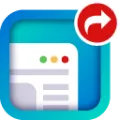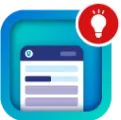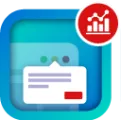-
Create an Analytics Dashboard with a TemplateEach template has a unique layout with empty widgets (widgets without steps), sections, and a color scheme. To populate the widgets with your data, use the widget wizards. To create your own layout, choose the blank template.
-
Create Dashboard PagesMake the information on a dashboard easier to digest by chunking the content into multiple pages. With pages, you can tell a story by creating a dynamic pathway through your dashboard. Depending on how you lay out your pages, you can create some cool effects as you transition from one page to the next. And because a page has fewer queries, dashboard performance increases.
-
Add Widgets to the DashboardWidgets are the basic building blocks of a dashboard. In the dashboard designer, you can add different widgets to perform functions. For example, widgets can calculate key performance indicators, filter dashboard results, visualize your data using interactive charts, and show record-level details in tables.
-
Manage Steps for WidgetsSteps return results that are displayed in widgets. For example, a number widget displays the result of a calculation—that calculation is defined in a step. Steps can query a data source, like a dataset or a Salesforce object. They can also be a static list of user-defined values—a static step. In addition to clipping a lens from an exploration, you can use the following ways to create steps in the dashboard designer: use the widget wizard or create it manually.
-
Make the Dashboard Widgets InteractiveAnalytics dashboards haveunique features that allow you to make the widgets interactive. For example, widgets in thedashboard can be filtered to show only results for the region that’s selected in a list widget.Or, when the value of a number widget can change to red when it falls below athreshold.
-
Set Initial Selections and Global Filters in the DashboardSet the initial selections and global filters that appear when the dashboard first opens.To analyze the results from a different angle, the dashboard viewer can change the initialselections and, if configured, global filters while viewing the dashboard.
-
Generate Unique Analytics Dashboard Layouts for Different DevicesAfter you add widgets to the dashboard, optimize the layout for each device on which the dashboards can be viewed. For example, you can remove widgets from a mobile phone layout to reduce the dashboard size for the smaller screen. You can also move widgets around in one layout and it doesn’t affect the other layouts.
-
Optimize Dashboard PerformanceBefore you finalize the dashboard, run a performance check on the dashboard and its steps to ensure that everything is running optimally. The dashboard inspector identifies different types of bottlenecks, like query issues and redundant queries, and provides recommendations to improve performance. Because dashboard layouts can contain different widgets (and steps), run the inspector on each layout. If a dashboard contains multiple pages, run the inspector on each page. The inspector provides results only for the current page.
-
Keyboard Shortcuts for Analytics Dashboards and LensesYou can do some basic actions from your keyboard. The dashboard designer shortcuts vary based on whether you are using the classic designer or dashboard designer.
Supported Editions - Available in Salesforce Classic and Lightning Experience., Available for an extra cost in Enterprise, Performance, and Unlimited Editions. Also available in Developer Edition.





